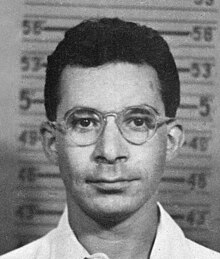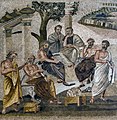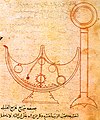Portal:History of science
The History of Science Portal
The history of science covers the development of science from ancient times to the present. It encompasses all three major branches of science: natural, social, and formal. Protoscience, early sciences, and natural philosophies such as alchemy and astrology during the Bronze Age, Iron Age, classical antiquity, and the Middle Ages declined during the early modern period after the establishment of formal disciplines of science in the Age of Enlightenment.
Science's earliest roots can be traced to Ancient Egypt and Mesopotamia around 3000 to 1200 BCE. These civilizations' contributions to mathematics, astronomy, and medicine influenced later Greek natural philosophy of classical antiquity, wherein formal attempts were made to provide explanations of events in the physical world based on natural causes. After the fall of the Western Roman Empire, knowledge of Greek conceptions of the world deteriorated in Latin-speaking Western Europe during the early centuries (400 to 1000 CE) of the Middle Ages, but continued to thrive in the Greek-speaking Byzantine Empire. Aided by translations of Greek texts, the Hellenistic worldview was preserved and absorbed into the Arabic-speaking Muslim world during the Islamic Golden Age. The recovery and assimilation of Greek works and Islamic inquiries into Western Europe from the 10th to 13th century revived the learning of natural philosophy in the West. Traditions of early science were also developed in ancient India and separately in ancient China, the Chinese model having influenced Vietnam, Korea and Japan before Western exploration. Among the Pre-Columbian peoples of Mesoamerica, the Zapotec civilization established their first known traditions of astronomy and mathematics for producing calendars, followed by other civilizations such as the Maya.
Natural philosophy was transformed during the Scientific Revolution in 16th- to 17th-century Europe, as new ideas and discoveries departed from previous Greek conceptions and traditions. The New Science that emerged was more mechanistic in its worldview, more integrated with mathematics, and more reliable and open as its knowledge was based on a newly defined scientific method. More "revolutions" in subsequent centuries soon followed. The chemical revolution of the 18th century, for instance, introduced new quantitative methods and measurements for chemistry. In the 19th century, new perspectives regarding the conservation of energy, age of Earth, and evolution came into focus. And in the 20th century, new discoveries in genetics and physics laid the foundations for new sub disciplines such as molecular biology and particle physics. Moreover, industrial and military concerns as well as the increasing complexity of new research endeavors ushered in the era of "big science," particularly after World War II. (Full article...)
Selected article -
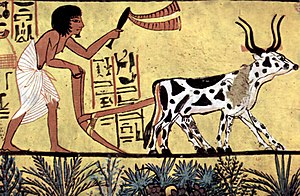
Agriculture began independently in different parts of the globe, and included a diverse range of taxa. At least eleven separate regions of the Old and New World were involved as independent centers of origin. The development of agriculture about 12,000 years ago changed the way humans lived. They switched from nomadic hunter-gatherer lifestyles to permanent settlements and farming.
Wild grains were collected and eaten from at least 104,000 years ago. However, domestication did not occur until much later. The earliest evidence of small-scale cultivation of edible grasses is from around 21,000 BC with the Ohalo II people on the shores of the Sea of Galilee. By around 9500 BC, the eight Neolithic founder crops – emmer wheat, einkorn wheat, hulled barley, peas, lentils, bitter vetch, chickpeas, and flax – were cultivated in the Levant. Rye may have been cultivated earlier, but this claim remains controversial. Regardless, rye's spread from Southwest Asia to the Atlantic was independent of the Neolithic founder crop package. Rice was domesticated in China by 6200 BC with earliest known cultivation from 5700 BC, followed by mung, soy and azuki beans. Rice was also independently domesticated in West Africa and cultivated by 1000 BC. Pigs were domesticated in Mesopotamia around 11,000 years ago, followed by sheep. Cattle were domesticated from the wild aurochs in the areas of modern Turkey and India around 8500 BC. Camels were domesticated late, perhaps around 3000 BC. (Full article...)
Selected image
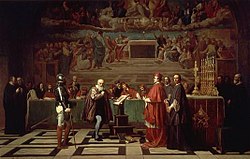
Galileo before the Holy Office, a 19th century painting by Joseph-Nicolas Robert-Fleury, is a classic expression of the conflict thesis regarding the relationship between religion and science. Galileo is shown valiantly defending himself and his Copernican views before the hostile Inquisition, which will soon declare his science to be heresy. In the 19th century, the Galileo affair, in somewhat distorted form, became a central example of the supposedly continual and inevitable struggle between science and religion.
Did you know
...that Einstein's famous letter to FDR about the possibility of an atomic bomb was actually written by Leó Szilárd?
...that geology was transformed in the latter part of the 20th century after widespread acceptance of plate tectonics?
...that the idea of biological evolution dates to the ancient world?
Selected Biography -
Louis Alexander Slotin (/ˈsloʊtɪn/ SLOHT-in; 1 December 1910 – 30 May 1946) was a Canadian physicist and chemist who took part in the Manhattan Project. Born and raised in the North End of Winnipeg, Manitoba, Slotin earned both his Bachelor of Science and Master of Science degrees from the University of Manitoba, before obtaining his doctorate in physical chemistry at King's College London in 1936. Afterwards, he joined the University of Chicago as a research associate to help design a cyclotron.
In 1942, Slotin was invited to participate in the Manhattan Project, and subsequently performed experiments with uranium and plutonium cores to determine their critical mass values. After World War II he continued his research at Los Alamos National Laboratory in New Mexico. On 21 May 1946, he accidentally triggered a fission reaction which released a burst of hard radiation. He was rushed to the hospital and died nine days later on 30 May. Slotin had become the victim of the second criticality accident in history following Harry Daghlian, who had been fatally exposed to radiation by the same plutonium "demon core" that killed Slotin. (Full article...)
Selected anniversaries
- 1492 – The Ensisheim Meteorite, the oldest meteorite with a known date of impact, strikes the earth around noon in a wheat field outside the village of Ensisheim, Alsace, France
- 1867 – Birth of Maria Sklodowska-Curie, Polish chemist and physicist, recipient of the Nobel Prize in physics and in chemistry (d. 1934)
- 1872 – Death of Alfred Clebsch, German mathematician (b. 1833)
- 1888 – Birth of Sir C. V. Raman, Indian physicist, Nobel Prize laureate (d. 1970)
- 1898 – Birth of Raphaël Salem, Greek mathematician (d. 1963)
- 1903 – Birth of Konrad Lorenz, Austrian zoologist, recipient of the Nobel Prize in Physiology or Medicine (d. 1989)
- 1913 – Alfred Russel Wallace, British naturalist and biologist (b. 1823)
- 1915 – Birth of Philip Morrison, American scientist (d. 2005)
- 1929 – Birth of Eric R. Kandel, Austrian neuroscientist, recipient of the Nobel Prize in Physiology or Medicine
- 1968 – Death of Alexander Gelfond, Russian mathematician (b. 1906)
- 2001 – The supersonic commercial aircraft Concorde resumes flying after a 15-month hiatus
Related portals
Topics
General images
Subcategories
Things you can do
Help out by participating in the History of Science Wikiproject (which also coordinates the histories of medicine, technology and philosophy of science) or join the discussion.
Associated Wikimedia
The following Wikimedia Foundation sister projects provide more on this subject:
-
Commons
Free media repository -
Wikibooks
Free textbooks and manuals -
Wikidata
Free knowledge base -
Wikinews
Free-content news -
Wikiquote
Collection of quotations -
Wikisource
Free-content library -
Wikiversity
Free learning tools -
Wiktionary
Dictionary and thesaurus

